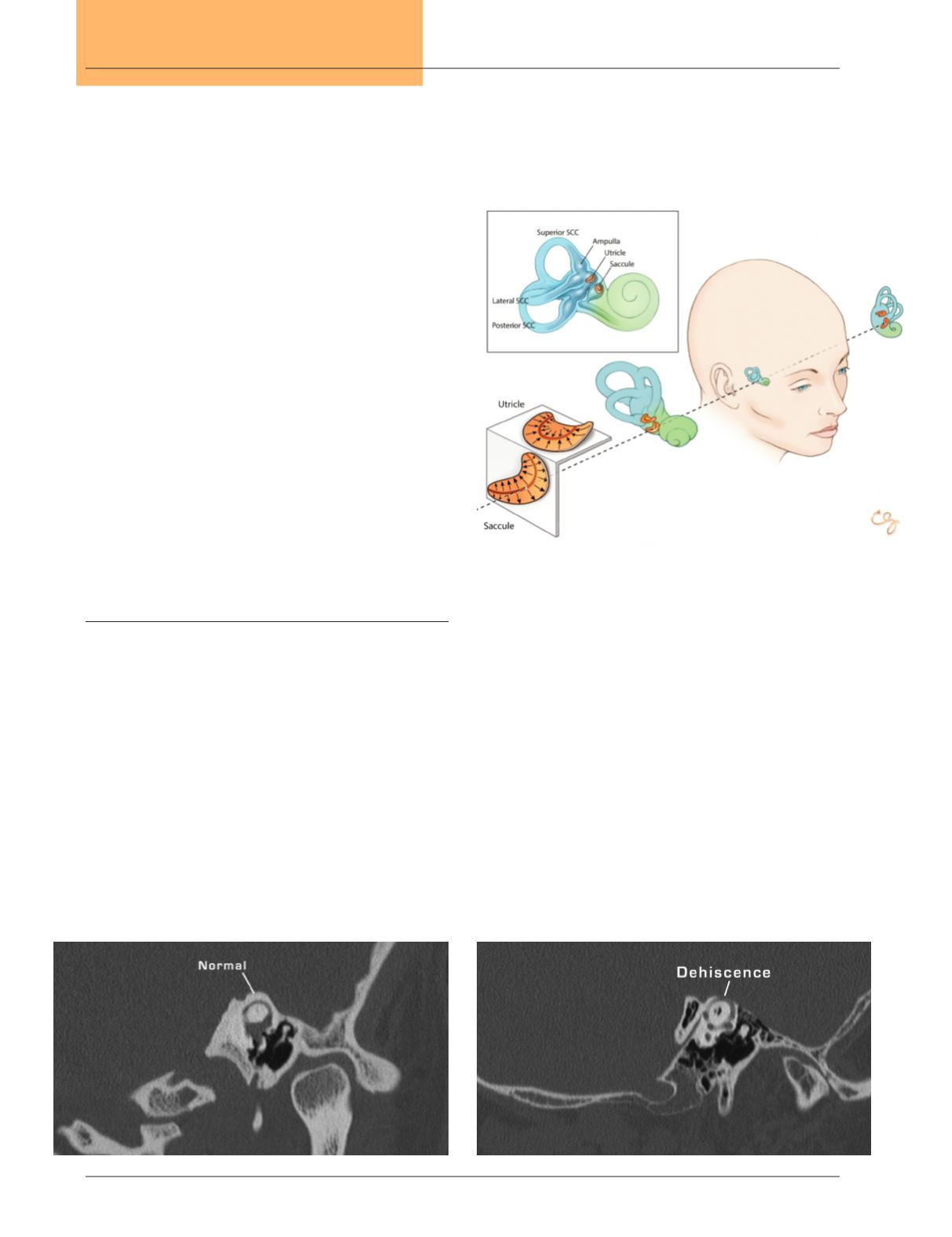
48
Vol. 66, No. 1 2015
Northeast Florida Medicine
Otolaryngology
labyrinth (cochlea duct, semicircular ducts, utricle and
saccule). (Figure 1) In the normal condition, there are two
windows – the oval window and the round window. The
oval window houses the stapes, which vibrates from sound
stimulation and compresses the perilymph, resulting in
fluid waves. As the perilymph is incompressible, the round
window membrane serves as a relief mechanism.
In the dehiscent superior semicircular canal condition, there
is a third, pathological window in the bony labyrinth of the su-
perior semicircular canal. Pressure and sound energy is diverted
through this third, pathologicalwindow.This dehiscence results
in both auditory and vestibular symptoms. The underlying
result of having the third window is hyperstimulation of the
cochlea and labyrinth.Of particular importance inunderstand-
ing the pathophysiology of a dehiscent superior semicircular
canal is that there is no primary pathology of the neurosensory
elements of the cochlea and labyrinth. The symptoms are a
result of overstimulation of normal, or non-pathologic, neu-
rosensory elements from diminished resistance and shunting
of sound and pressure energy within the bony labyrinth and
cochlea due to the “third” mobile window.
Evaluation
Most patients present with vague, difficult to describe
symptoms of dizziness, such as giddiness, lightheadedness,
intoxication, being off balance and unsteadiness. There
are numerous conditions with similar vague, nonspecific
symptoms (sleep disturbance, medication side effects,
anxiety, anemia, chronic fatigue, depression, diabetes and
hypertension to name a few). The symptoms that raise the
index of suspicion for a dehiscent superior semicircular
canal are those evoked by sound (Tullio phenomenon) or
pressure (Hennebert phenomenon). Loud sounds evoke
a sensation of significant dizziness and can result in falls.
Examples of inciting sounds include movie theaters, music
(bars, concerts or church), heavy equipment, power tools
and sporting events. Patients report they feel like their eyes
“jump, jiggle, vibrate” when exposed to intense, loud noise.
There are also auditory symptoms that are unrelated to
loud noise. Autophony (hearing one’s own voice “inside my
head,” echo sensations as if in a tunnel or barrel), pulsatile
tinnitus, abnormally loud chewing, even hearing the sound
of normal eye movements are the result of hypersensitivity
of a normal cochlea.
The physical exam is typically normal and unrevealing by
the absence of signs, a normal ear canal and eardrum, no
head and neck masses, no cervical or cardiac bruits, normal
extraocular movements, and no nystagmus.
Figure 2.
Normal superior semicircular canal, Poschl view.
Figure 3.
Dehiscent superior semicircular canal, Poschl view.
Figure 1.
Normal labyrinth and cochlea.


